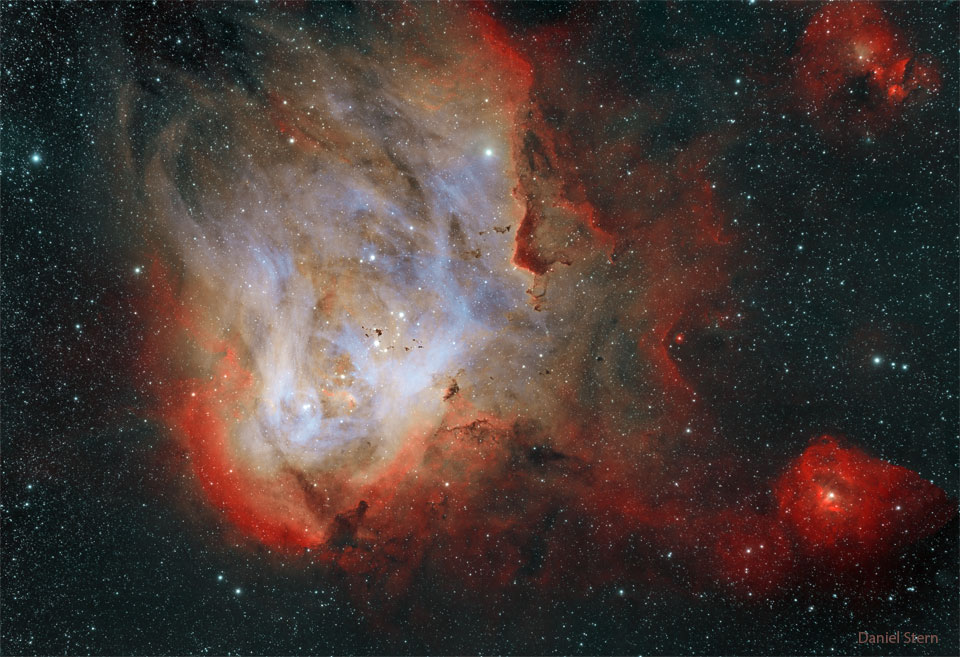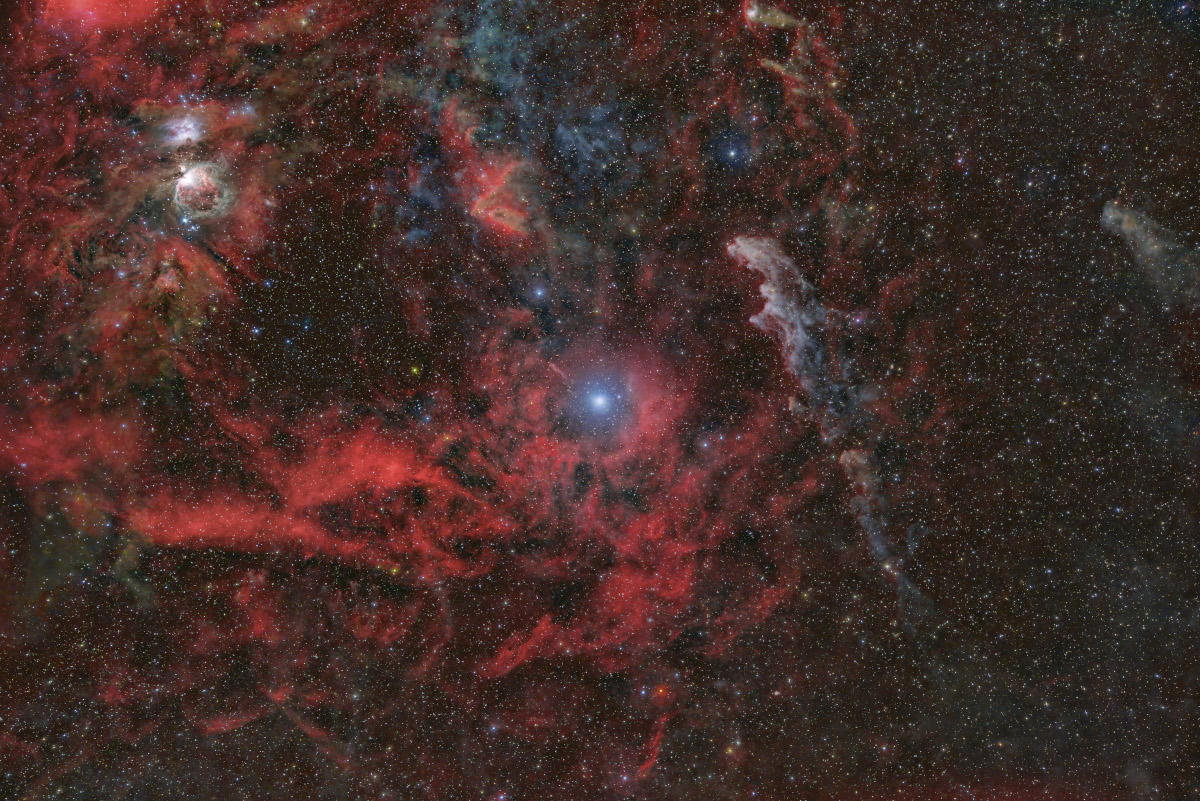
Nombre total de pages vues
11/04/2023
BEAUTé DES ASTRES DE LA VOIE LACTéE - L'exoplanète GJ 436b

AERONAUTIQUE - Avions de légende : Chance Vought F4U Corsair

Ce chasseur-bombardier monoplace de l'armée américaine de près de quatre tonnes à vide a été conçu autour d'un puissant moteur Pratt & Whitney, de 2.000 chevaux. Construit à partir de 1942, il a d'abord été engagé dans la guerre du Pacifique, durant la seconde guerre mondiale.
Reconnaissable à son aile en W (qui permettait de raccourcir les jambes du train d'atterrissage), il était très rapide pour l'époque (plus de 600 km/h) et conçu pour se poser sur les porte-avions. L'avion a été ensuite utilisé par l'armée française en Indochine, à partir de 1952.
Le « Corsair » doit aussi sa célébrité à une série télévisée, Les têtes brûlées en français, diffusée dans les années 1970. Le comédien Robert Conrad y jouait le rôle de Gregory « Pappy » Boyington, qui a réellement existé.
© Gerry Metzler, Flickr, CC by-sa 2.0
ASTRONOMY - North Star: Polaris and Surrounding Dust
2023 April 11
Image Credit & Copyright: Javier Zayaz
Explanation: Why is Polaris called the North Star? First, Polaris is the nearest bright star toward the north spin axis of the Earth. Therefore, as the Earth turns, stars appear to revolve around Polaris, but Polaris itself always stays in the same northerly direction -- making it the North Star. Since no bright star is near the south spin axis of the Earth, there is currently no bright South Star. Thousands of years ago, Earth's spin axis pointed in a slightly different direction so that Vega was the North Star. Although Polaris is not the brightest star on the sky, it is easily located because it is nearly aligned with two stars in the cup of the Big Dipper. Polaris is near the center of the eight-degree wide featured image, a digital composite of hundreds of exposures that brings out faint gas and dust of the Integrated Flux Nebula (IFN) all over the frame as well as the globular star cluster NGC 188 on the far left. The surface of Cepheid Polaris slowly pulsates, causing the famous star to change its brightness by a few percent over the course of a few days.
10/04/2023
ART FRACTAL - Fractale géométrique scintillante
ASTRONOMY - IC 2944: The Running Chicken Nebula
2023 April 10
Image Credit & Copyright: Daniel Stern
Explanation: To some, it looks like a giant chicken running across the sky. To others, it looks like a gaseous nebula where star formation takes place. Cataloged as IC 2944, the Running Chicken Nebula spans about 100 light years and lies about 6,000 light years away toward the constellation of the Centaur (Centaurus). The featured image, shown in scientifically assigned colors, was captured recently in a 16-hour exposure over three nights. The star cluster Collinder 249 is visible embedded in the nebula's glowing gas. Although difficult to discern here, several dark molecular clouds with distinct shapes can be found inside the nebula.
09/04/2023
ASTRONOMY - M100: A Grand Design Spiral Galaxy
2023 April 8
Image Credit: NASA, ESA, Hubble; Processing: Judy Schmidt
Explanation: Majestic on a truly cosmic scale, M100 is appropriately known as a grand design spiral galaxy. It is a large galaxy of over 100 billion stars with well-defined spiral arms that is similar to our own Milky Way Galaxy. One of the brightest members of the Virgo Cluster of galaxies, M100 (alias NGC 4321) is 56 million light-years distant toward the constellation of Berenice's Hair (Coma Berenices). This Hubble Space Telescope image of M100 was taken with the Wide Field Camera 3 and accentuates bright blue star clusters and intricate winding dust lanes which are hallmarks of this class of galaxies. Studies of variable stars in M100 have played an important role in determining the size and age of the Universe.
ANIMAUX NUISIBLES UTILES - L'araignée

08/04/2023
PHENOMENES ATMOSPHERIQUES - Un gigantesque anneau rouge dans le ciel a inquiété les italiens
FuturaSciences
07/04/2023
ASTRONOMIE - Magnifique tableau céleste
Positions de Vénus, Mercure et Mars le 13 avril 2023 vers 21h30 (heure de Paris).
En avril, le printemps s’installe et il est temps de dire au revoir aux constellations hivernales pour quelques mois ! Orion ou encore le Taureau sont ainsi chaque soir plus proches de l’horizon ouest et les crépuscules sont de plus en plus tardifs…
Néanmoins, ne manquez pas le charmant tableau que ces deux constellations offrent en début de nuit le 13 avril, alors que la planète Vénus s’invite dans le secteur. Brillant de mille feux et toujours immanquable, celle qu’on appelle aussi l’étoile du Berger se trouve juste entre l’amas d’étoiles bien visible des Pléiades et l’étoile orangée Aldébaran. Si vous admirez la scène avant 21h45, vous remarquerez aussi certainement la planète Mercure au ras de l’horizon et bien lumineuse. Pour compléter ce tableau planétaire, prolongez la corne inférieure du Taureau pour trouver Mars, dont l’éclat est désormais bien modeste comparé à celui de la fin 2022. À la même hauteur et à droite de la planète rouge, vous repérerez aussi sans peine l’étoile Capella.
Ce magnifique tableau céleste s’admire à l’œil nu, seul ou à plusieurs, pourquoi pas avec les enfants. Mais si vous souhaitez utiliser une paire de jumelles, pointez-les vers le splendide couple Vénus-Pléiades, bien visibles ensemble dans cet instrument.
Stelvision
ASTRONOMY - Rigel Wide
2023 April 7
Image Credit: Rheinhold Wittich
Explanation: Brilliant, blue, supergiant star Rigel marks the foot of Orion the Hunter in planet Earth's night. Designated Beta Orionis, it's at the center of this remarkably deep and wide field of view. Rigel's blue color indicates that it is much hotter than its rival supergiant in Orion the yellowish Betelgeuse (Alpha Orionis), though both stars are massive enough to eventually end their days as core collapse supernovae. Some 860 light-years away, Rigel is hotter than the Sun too and extends to about 74 times the solar radius. That's about the size of the orbit of Mercury. In the 10 degree wide frame toward the nebula rich constellation, the Orion Nebula is at the upper left. To the right of Rigel and illuminated by its brilliant blue starlight lies the dusty Witch Head Nebula. Rigel is part of a multiple star system, though its companion stars are much fainter.
CATASTROPHES NATURELLES - Un Mégatsunami de 500 mètres frappe l’Alaska
Vous imaginez une vague plus haute que presque tous les gratte-ciel de New York ? C’est difficile à croire, et pourtant, c’est bien ce qui s...

-
2022 September 26 All the Water on Planet Earth Illustration Credit: Jack Cook, Adam Nieman, Woods Hole Oceanographic Institution ; Data ...
-
2025 May 11 The Surface of Venus from Venera 14 Image Credit: Soviet Planetary Exploration Program , Venera 14 ; Processing & Copyri...






